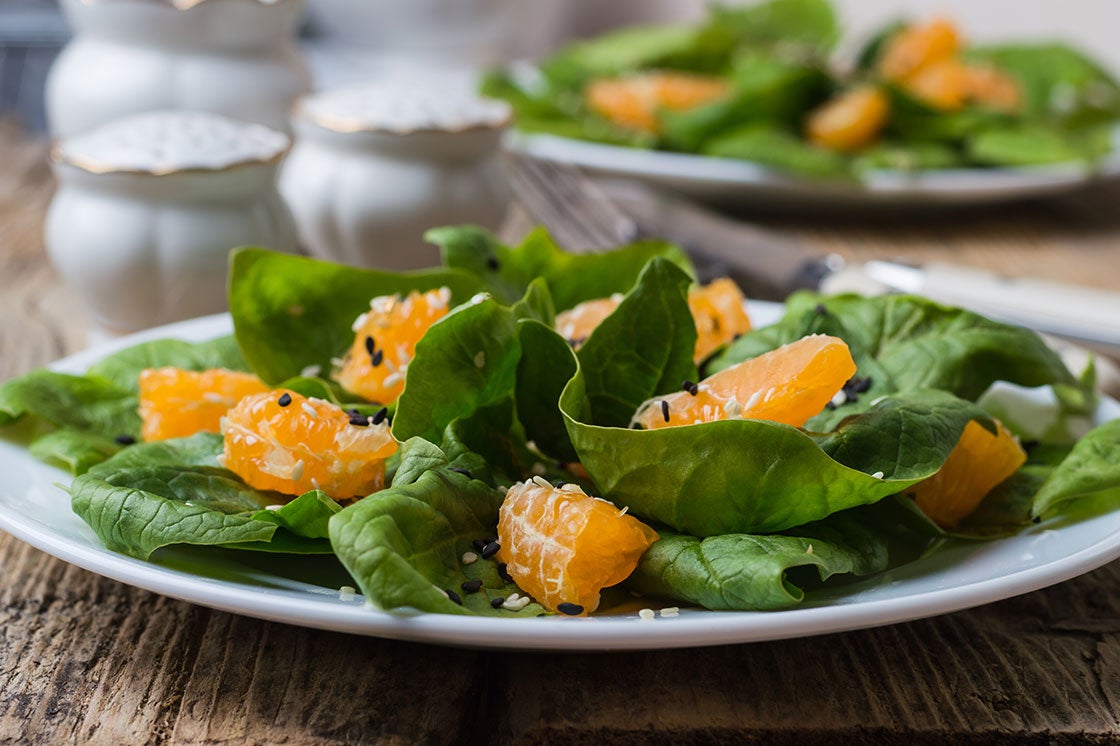Are You Getting Enough Iron?

Q: Does a vegetarian diet give me the iron I need?
A: Yes and no. Now, you are right to worry about getting enough iron. It’s an extremely important mineral that’s present in all cells and is essential for transporting oxygen through your body. But although it’s true that red meat is high in iron, the mineral is also available in a slew of plant foods. In fact, it’s so prevalent in vegetarian diets—from soybeans to enriched cereals—that many studies have documented that vegetarians actually get as much iron as meat eaters do.
For instance, research published as far back as 1999 in the American Journal of Clinical Nutrition found no significant difference in the average daily iron intake of vegetarians versus omnivores. However, don’t relax quite yet. The amount of iron you eat is not the same as the amount of iron your body stores, and that’s the measurement that really matters. And despite a relatively high dietary iron intake, vegetarians tend to store low levels of it. Here’s why.
First, the type of iron that’s found in grains and vegetables, called nonheme, is not absorbed by the body as well as heme, the iron found in meat. This means that even though vegetarians might be eating decent amounts of iron, their bodies can’t process it very well, so it takes more nonheme iron to maintain normal iron stores.
Second, vegetarian food may actually work against you. Some components of vegetarian staples can actually hinder the absorption of nonheme iron. For example, a substance called phytate, found in whole grains and legumes, can limit iron absorption. Even soy, which is a good vegetarian source of iron, contains phytate and certain proteins that interfere with iron absorption. Other foods that obstruct iron absorption include coffee, tea (including some herbal teas), cocoa, calcium, fiber and some spices.
Q: So how can I keep my iron levels up? And how much do I need, anyway?
A: Never fear, vegetarians can maintain good iron stores. Certain vitamins and minerals are needed for your body to absorb iron. Vitamin C, in particular, is a potent enhancer of iron absorption if it’s eaten at the same time as iron-rich foods. Most vegetarians get plenty of vitamin C from fruits and vegetables such as broccoli, tomatoes, strawberries, cauliflower, kiwi fruit, cantaloupe, potatoes, cabbage and citrus.
Try mixing and matching these with the items in our chart. For example, top iron-fortified cereal with strawberries and soymilk. Toss a spinach salad with orange segments and sesame seeds. And try to eat lots of the foods that contain both iron and vitamin C: broccoli, swiss chard, potatoes. Other iron-essential nutrients include copper, manganese, vitamins A and D and the B-complex vitamins. In general, iron-enhancing and -inhibiting foods balance each other out in vegetarian meals.
It also seems that your body adapts to varying dietary conditions over time, becoming more efficient at absorbing iron when you need more of it and absorbing less when supplies in your diet are abundant. Although iron-deficiency anemia is among the most common nutritional deficiencies in the world, most people in the United States, Canada and other developed countries don’t suffer from it. Those who are at risk include children and adolescents (whose growing bodies require increased iron intake to maintain stores) and women in their childbearing years (who lose iron through menstruation). This is why recommended dietary allowances (RDA) of iron vary by age and gender. The RDA for premenopausal women is 15mg per day, while men and postmenopausal women should aim for 10mg per day. Premenopausal and pregnant women should consult their health care providers for advice about iron supplements. Men and postmenopausal women should avoid iron supplements since too much may carry its own risks.
The bottom line for vegetarians: If you routinely eat a good variety of foods, there’s probably nothing to worry about. Just be mindful of the factors that affect iron absorption, and avoid a diet that’s high in iron-blocking foods and low in iron-embracing ones. Some iron-filled foods include whole grain and iron-enriched breads and cereals, legumes, nuts, seeds, dark green and leafy vegetables and some dried fruits.